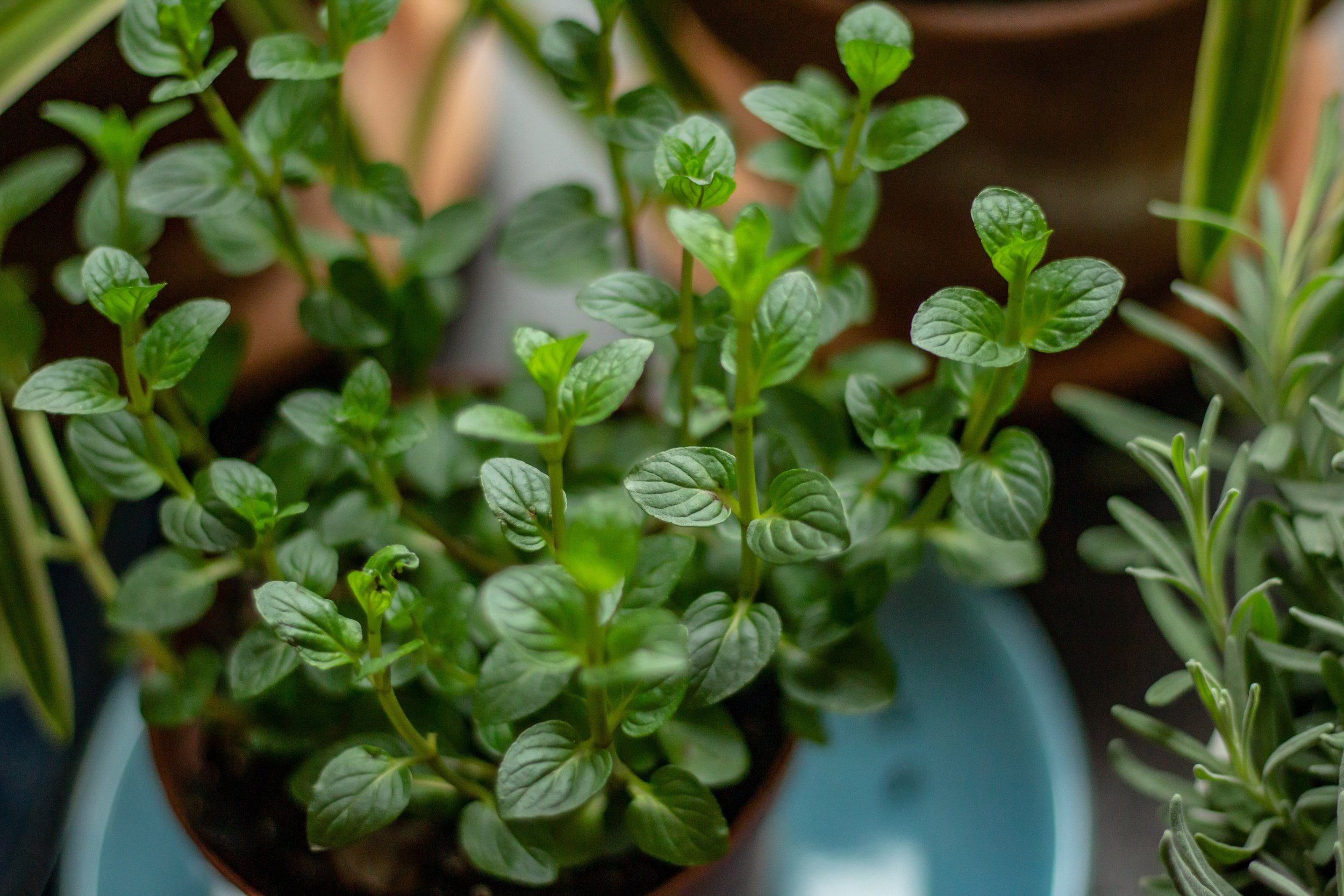A Scent for Purpose: Peppermint Essential Oil
“Icy, cool, stimulating Peppermint sustains the energy required to maintain an inner attention to your highest potential, bringing balance and focus to your own idea of purpose.”
Peppermint Essential Oil
Peppermint is a perennial herb, growing to a height of 30 to 100 centimeters. Native to the Mediterranean and western Asia, mints now grow in temperate regions around the world.
Peppermint has been used as a medicine and a perfume for thousands of years. It was an ingredient in kyphi, a sacred incense used by the Ancient Egyptians. It was widely used in Ancient Greece and Rome as both a medicine, a nerve tonic, and a perfume.
Peppermint (Mentha x piperita) essential oil is steam distilled from the leaves. The essential oil contains menthol, a chemical constituent that induces a cooling sensation and is also known to help ease tension headaches and muscular aches and pains.
The Scent
In the early years of my aromatherapy practice, I used a non-organic peppermint essential oil that came from the United States. The sweet minty scent reminded me of candy canes and Christmas. It was okay but definitely not a scent I was naturally drawn to.
I will never forget the moment that I smelled an organic peppermint essential oil from France. It was transformative. The scent was green, lush, minty, and soothing. And so very different from the other variety I had been using.
Create a Scent Experience
Put a drop of Peppermint on a tissue and inhale the aroma. You may wish to close your eyes while you do this.
Be with the scent.
What do you notice in your body?
Take a break from smelling the aroma and then smell again.
What do you notice in your body? Are there any words, images, or insights that arrive within you?
“Peppermint helps you feel replenished and energetic, so you can take care of what needs to be done.”
Properties of Peppermint Essential Oil
Aromatherapist Peter Holmes (2016) states that Peppermint is perhaps the emblem of a Western cerebral stimulant. It is awakening and uplifting - and a little definitely goes a long way to increasing alertness and motivation.
Energetically, the scent raises energy up to the head. In addition to its psychological effects, inhalation of Peppermint can help improve dizziness and headaches.
It is a cooling stimulant & anti-inflammatory when applied topically (and properly diluted with a carrier oil) and helps to relief a wide variety of pain conditions.
On a subtle level, Peppermint assists in reconnecting you to your vital passion and supports you in the digestion of new ideas and insights.
Blends well with: Lavender, lemon, rosemary, eucalyptus, marjoram, patchouli essential oils.
Safety Tips
We should take extra caution when using Peppermint essential oil. Here are some recommendations:
Do not use topically with babies or children under five years old
The essential oil can be irritating if applied on the face or near the eyes.
It may be skin irritating if used in the bath.
Always dilute peppermint essential oil before applying it to your skin. Use a maximum of 5 – 6 drops per 30 ml of carrier oil.
Tisserand and Young (2014) state that peppermint essential oil should be avoided in the instance of cardiac fibrillation and by those with a G6PD deficiency.
Unwind Massage Oil
Unwind from a busy day with this soothing and comforting massage oil.
Patchouli has a grounding and stabilizing effect on emotions and Peppermint helps to relieve tension and digest the experiences of the day.
Recipe
30 mL carrier oil (like jojoba or sunflower seed oil)
5 drops Peppermint (Mentha x piperita) essential oil
5 drops Patchouli (Pogostemom cablin) essential oil
Mix all of the ingredients together in a dark glass bottle. Shake well.
Aromatic Ritual
Use this massage oil to create an aromatic ritual to support you in unwinding at the end of the work day.
Massage your feet, the back of your neck, forehead and temples with a little of the massage oil. Take a few slow deep breaths - inhaling the aroma and exhaling the day’s experiences.
References
Battaglia, S. (2021). The Complete Guide to Aromatherapy, Volume III - Psyche & Subtle. Australia: Black Pepper Creative Pty Ltd.
Keim, J & Bull, R. (2008). Daily Aromatherapy: Transforming the Seasons of Your Life with Essential Oils. Berkeley: North Atlantic Books.
Holmes, P. (2016). Aromatica: A Clinical Guide to Essential Oil Therapeutics. London: Singing Dragon.
Mojay, G. (1996). Aromatherapy for Healing the Spirit. United Kingdom: Gaia Books Limited.
Tisserand, R & Young, R. (2014) Essential Oil Safety. London: Churchill Livingstone
Do not take essential oils internally and do not apply undiluted on the skin. Always consult a professional aromatherapist if you have medical conditions. Use caution when using essential oils with children.



